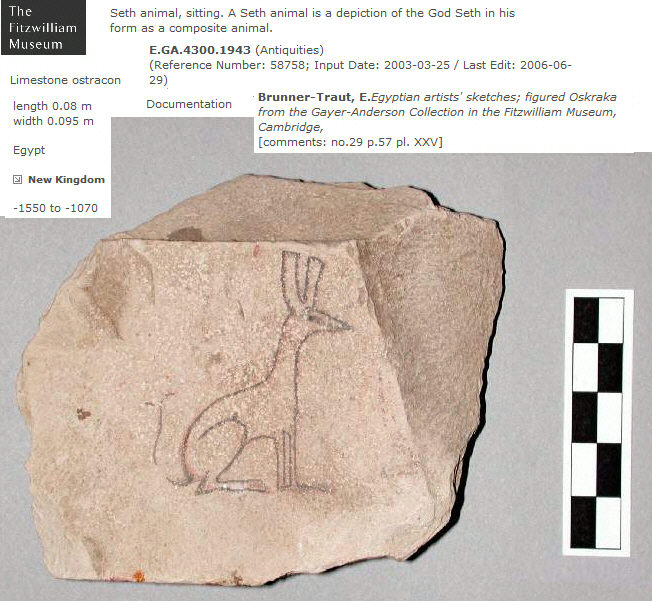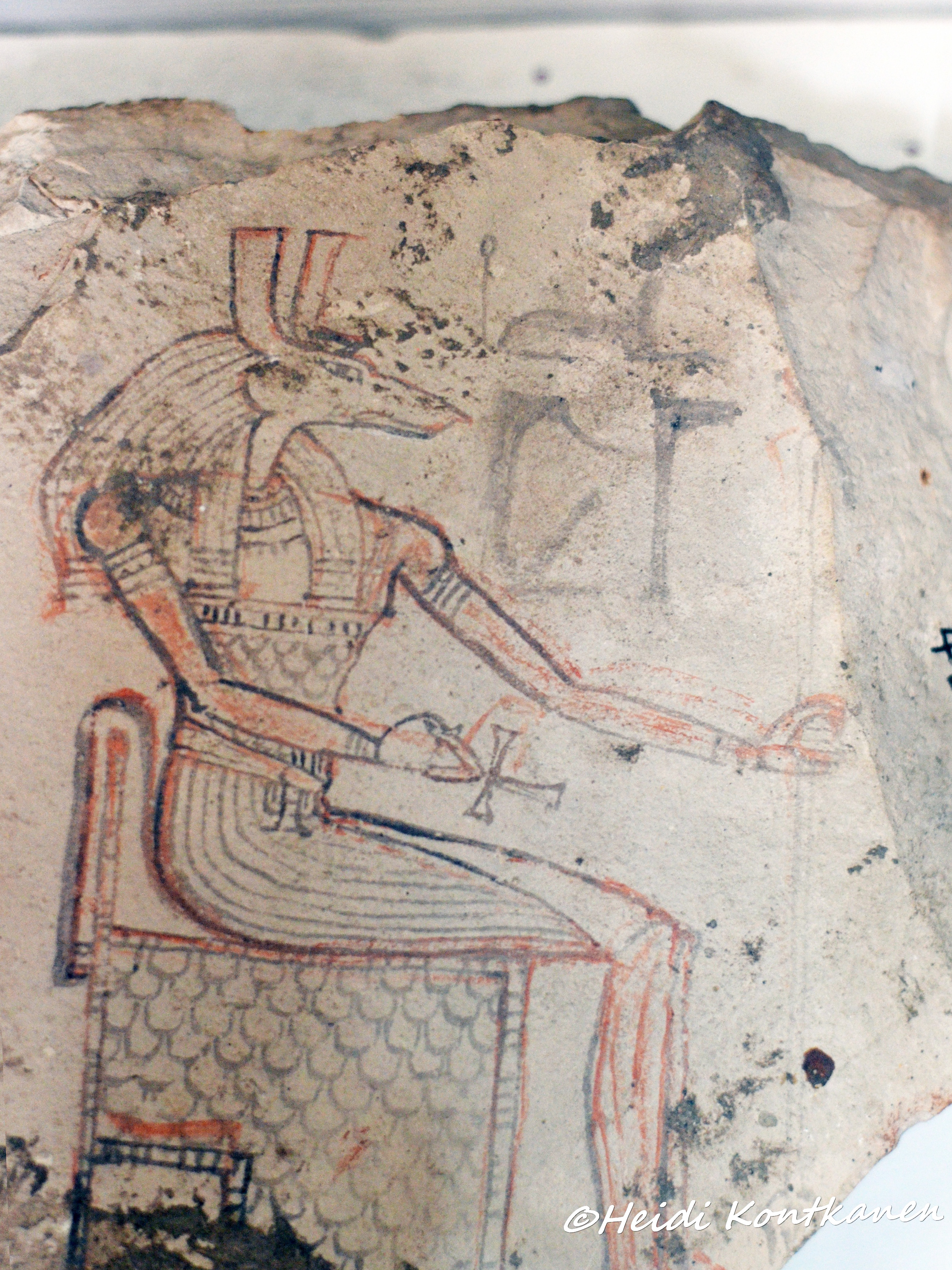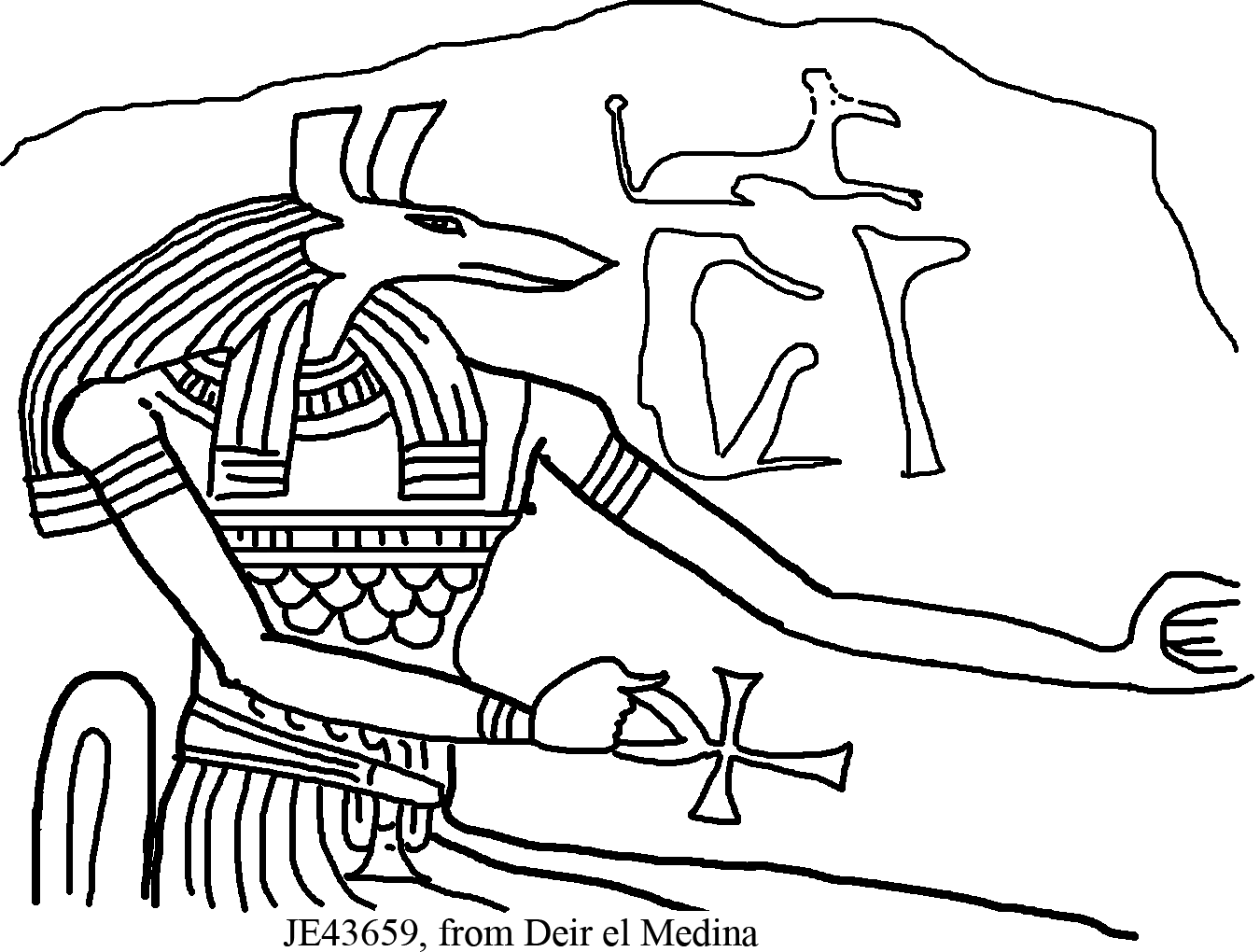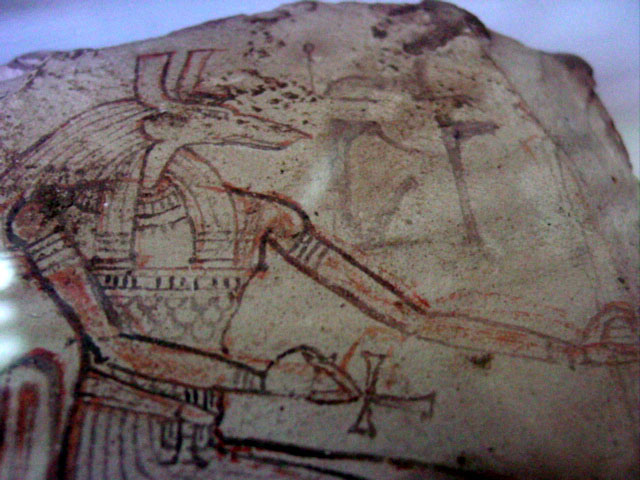
From The Fitzwilliam Museum, E.GA.4300.1943
New Kingdom limestone ostracon

From The Fitzwilliam Museum, E.GA.4300.1943
New Kingdom limestone ostracon
|
(from Wikipedia) "In Egypt, anything with a smooth surface could be used as a writing surface. Generally discarded material, ostraca were cheap, readily available and therefore frequently used for writings of an ephemeral nature such as messages, receipts, students exercises and notes: pottery shards, limestone flakes,[1] thin fragments of other stone types, etc., but limestone sherds, being flaky and of a lighter color, were most common. Ostraca were typically small, covered with just a few words or a small picture drawn in ink;[2]but the tomb of the craftsman Sennedjem at Deir el Medina contained an enormous ostracon inscribed with the Story of Sinuhe.[3] The importance of ostraca for Egyptology is immense. The combination of their physical nature and the Egyptian climate have preserved texts which in other cultures were lost, texts of a mundane nature,[4] which are often better witnesses of everyday life than literary treatises preserved in libraries." The Brunner-Traut note at the museum website says this particular ostracon is an artist's sketch. I didn't have much info about the following piece, except that it was photographed at the Cairo museum, until I read Eugene Cruz-Uribe's "Seth, God of Power and Might", in the Journal of the American Research Center in Egypt, issue 45. From the style of the drawing, it is very likely from the New Kingdom:
|


From Cruz-Uribe's article, we learn it is JE43659, from Deir el Medina
"The figure is labeled 'Seth' written with a Seth-animal followed by the god-sign and a seated divine figure." (page 213)

Photo taken by 'Tutincommon', uploaded on August 26, 2007